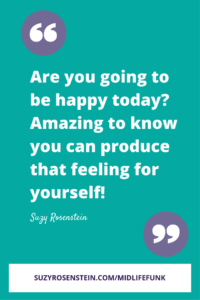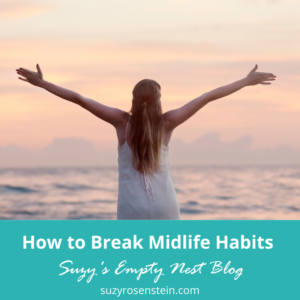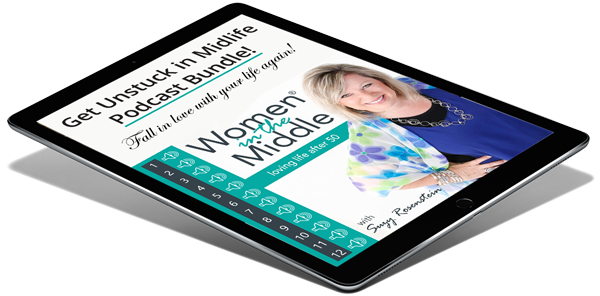Habits can be hard to break. Especially in midlife.
Do you know how habits develop? Habits are just practiced behavior that eventually become involuntary; midlife habits can be hard to break.
Whatever you practice becomes a habit.
What you practice DOING becomes a habit.
What you practice NOT DOING also becomes a habit.
This idea of “practice” and “habits” also applies to thoughts.
What you practice thinking a certain way, for example, can also become a habit.
Let’s take brushing your teeth as a habit we can all relate to. Most of us have practiced doing this at least twice a day for as long as we can remember. It’s rare that we would forget to brush our teeth. It’s become a habit.
Now let’s take flossing. I will use myself as an example. For me, brushing my teeth twice a day is more of a habit than flossing my teeth twice a day is. It’s much more likely that I won’t floss than brush. In fact, I have practiced NOT FLOSSING twice a day for years and now that has become a habit.
I have a thought lurking about flossing that is not helping me floss. I think it’s something like, “this will take too much time.” I practice that thought regularly; my result is that I’m a fair-weather flosser.
It’s the same with all kinds of thoughts.
Let’s use weight. Like many women, I think that I weigh too much. I can’t even tell you how many times I think that thought per day. I know that I’m not even aware of how often that thought pops into my head.
I practice thinking that thought without  even knowing it. I guess you could say I think that thought without my permission. It’s become habitual. Involuntary.
even knowing it. I guess you could say I think that thought without my permission. It’s become habitual. Involuntary.
Ewwwwww.
I hate knowing that.
Thinking that thought does not produce feelings that I want to feel. When I think that I weigh too much, I feel sad and not proud of myself. When I feel that way, I’m not likely to do anything substantial about my weight. The result? I weigh too much.
What a surprise…my result proved my thought.
I challenge you to think about the habits in your life. Look for habits related to your thinking and your behavior. Think about your relationships, your career and your health. Which related habits are intentional and which are not?
The good news is that we create habits and we can change habits too.
Awesome to know, isn’t it? Even in midlife, with decades of practice!
Now that you’re thinking about it, you may become aware of some interesting thoughts. Thoughts you’ve been hanging on to for decades, like a cozy, warm blanket. Or those pajama’s with holes that you can’t bare to get rid of.
You can definitely ditch habits that are no longer serving you.
But it takes some work.
How do you break midlife habits and create new ones? Mindfulness is the key.
Step 1: Raise your awareness. The first step involves becoming aware of what you’ve been thinking. Notice how your thinking has been creating your results. You have to become an expert in catching yourself in the act. Think of your thoughts as sentences in your mind. What’s going on up there without your permission?
Step 2: Notice your feelings as they relate to your thoughts. This is huge. You will soon understand that you aren’t just feeling feelings “willy nilly.” Your feelings are directly related to your thoughts. And your feelings then lead to your behavior, your action.
Step 3: Decide what result you want. This step is awesome because you can totally create the results in your life that you WANT. Be as specific as possible.
Step 4: Identify what action you need to take to create your desired result. Most of us are great at thinking about actions. What do you have to do to get the outcome you want?
Step 5: Identify how you would have to FEEL to create that result. Close your eyes and think about what feeling would be necessary to feel for you to take the action you need to take. A feeling is usually one word that reflects a vibration in your body. What is the feeling?
Step 6. Identify what you would have to THINK to create that feeling that would lead to your desired result. Now really focus on that feeling. What thought would you have to have to produce that feeling? Thoughts are optional and create feelings, so the answer to this question is specific to you and your brain.
Step 7. Practice thinking the new thought. Be extremely deliberate. You are intentionally creating the new habit. What can you do to ensure that you will remember to practice the thought that you’ve come up? Remember, it’s the key to you successfully creating the result you want. Try sticky notes near your tooth brush and computer and reminders in your phone. Make thinking the thought part of a routine when you see your strategically placed reminders.
Step 8: Do, Observe, Correct. This idea is from Thomas M. Sterner’s book, The Practicing Mind. The practice of “D.O.C” is key to learning any new skill. It keeps you objective and out of self-judgement. Best to stay in the present moment, which is also the process of learning the new habit. Remember that your thoughts are just sentences in your mind. If the thought you’ve identified isn’t producing the feeling and result that you want, correct it! Simple as that. Give your self time and patience to learn something new.
Awareness is what mindfulness is all about. It’s the secret sauce!


